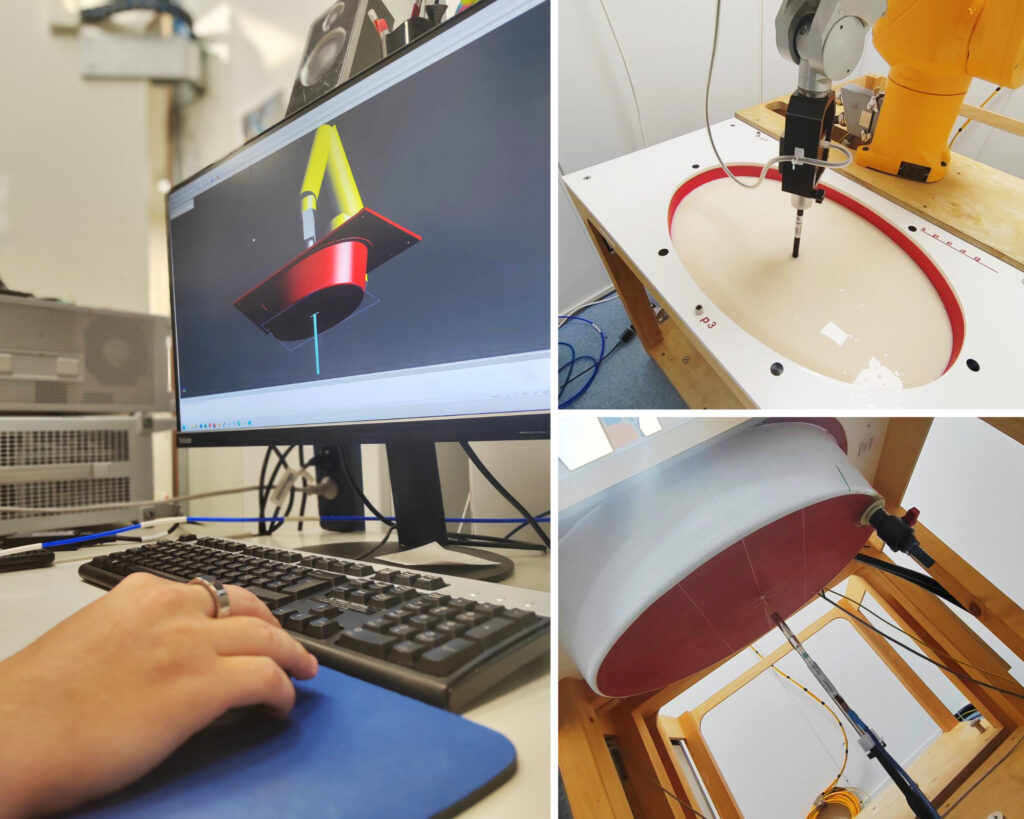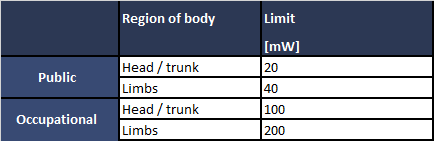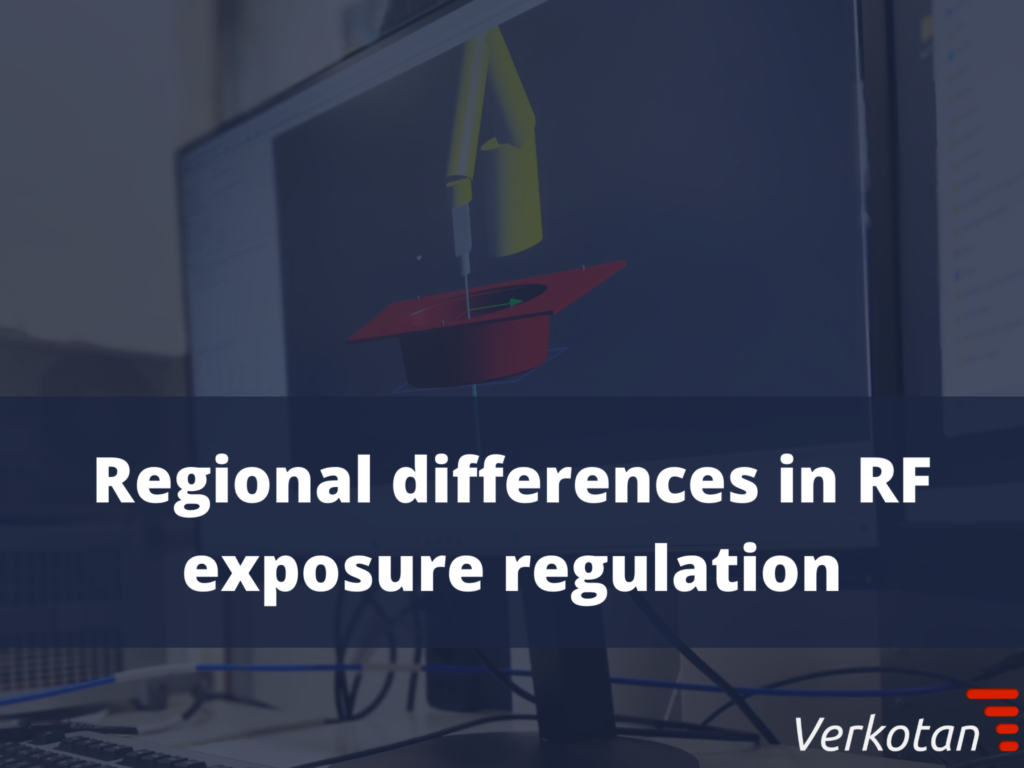Specific Absorption Rate (SAR) is a metric of radio frequency (RF) energy absorbed by users from wireless devices. The use of over 15 billion cellphones and other radio products by eight billion people on Earth has the regulatory agencies worried about safety standards for RF energy absorbed by those holding smartphones closer than 20 cm to the body or head for long durations. A complete switchover to 5G technology would further intensify the use of high-frequency bandwidths across the RF spectrum. Health impacts due to RF energy are in the realm of research, and RF exposure compliance needs timely, accurate, and expert enterprise for testing as per the regional regulations.
There are four techniques to evaluate RF exposure compliance:
(i) Assessment of low power equipment (ii) Power density evaluation (iii) Electromagnetic Field (EMF) Measurements, and (iv) Specific Absorption Rate (SAR) or Absorbed Power Density (APD) testing. Whereas SAR testing can be performed on all radio devices operating in the frequency area from 4MHz to 6GHz, the alternatives are tied-in to certain requirements. Verkotan Oy is an expert in SAR testing based in Oulu, Finland, and well versed in other RF compliance testing methods as well.
Pre-compliance SAR testing is done for a prototype device under development, and it gives an indication if it would pass the mandatory SAR testing when ready. This helps to locate and fix issues in the R&D stage itself and serves a prequel of the SAR level for the final product. Thus, costly design errors can be avoided, and the prototype can clear regulatory requirements down the line. This in turn saves serious costs, leads to predictable certification costs, and early access to market.
Compliance SAR testing is required for all the radio devices that are used closer than 20 cm to the human head or body and exceeds certain region-specific output power thresholds before permission is given for market sales. Verkotan SAR test laboratories are accredited by Finnish Accreditation Service (FINAS) and in turn an International Laboratory Accreditation Cooperation (ILAC) recognized test laboratory. We have the capability to perform SAR testing for certifications mandated by the council of European Union (CE), the Innovation, Science and Economic Development Canada (ISED),the Federal Communications Commission (FCC) in the U.S, Australian Communications and Media Authority (ACMA) and The Ministry of Internal Affairs and Communications (MIC) in Japan.
SAR requirements and guidelines vary from device to device and region to region. Exposure limits for wireless device RF exposure are determined based on how the device is used (close to head or hand). The guidelines specify the maximum level of RF energy that can be absorbed by a user’s head, body, or Limbs within a safety margin. SAR is expressed in units of watts per kilogram (W/kg) (Table 1).

SAR limits in European Economic Area are 2 W/kg measured from 10g tissue volume and for USA and Canada 1.6W/kg measured from 1g tissue volume. For limb SAR exposure limits is 4 W/kg and it is measured from 10g tissue volume for both Europe and North America. Maximum permissible exposure power density and electromagnetic field measurements have their own limits that vary depending on the frequency.
We provide the 3 R’s for SAR testing: right methods, rapid service, and reliable test results. State-of-the-art equipment is installed at our testing laboratory at Oulu including a near field scanning system, a high precision robotics system (Staubli), robot controller, computer, near-field probe, probe alignment sensor, and a phantom containing the tissue-equivalent material.
Prior to evaluating a device, the phantom is filled with tissue simulating liquids having similar dielectric properties as human tissues to measure electromagnetic radiation. The dielectric parameters of the liquid are tested with a coaxial probe to ensure compliance with test standards. Then the device to be tested is positioned against the phantom like how a human subject would place it close to the head during use. The electric field generated by the device into the liquid is measured with a field probe. Based on the e-field measurements, SAR value is calculated. In addition to RF exposure testing, Verkotan manufactures standardized and customized tissue simulating liquids from 4MHz to 8 GHz that are in demand from clients across the world.

Prior to the actual SAR testing, we ensure accuracy of SAR measurements by evaluating a standardized dipole and then compare the test results with the calibrated SAR value for the dipole.

Fig 2. SAR tissue simulating liquid being tested
The first step of successful SAR evaluation is to assess foreseeable use-cases, which means how the device, or its different accessories might impact the SAR value. Thus, the device may be tested together with the accessories. In SAR testing terms, these different use-cases in which the device must be tested, are called test positions. For example, voice mode is tested against head phantom. Some test positions might be more conservative than others and have stricter SAR limits than other test positions. This could reduce the overall testing time since a device might comply with more strict limits than was originally intended. For example, in CE certifications, if a device can be carried in a pocket (next to body) and held in hand, the pocket use-case need not be measured. This is because the device is closer to body when held in hand, and if the device passes the limb SAR test, and the measured value is under the body SAR limit, it will also pass the pocket use case SAR test (body SAR). Often body worn devices are measured with 5mm distance, and limb measurements are done using 0mm distance.
SAR testing is not necessarily required for every position in which the device will be used. For example, position closer to body may only require testing even though the device would be used close to head too. These SAR testing reductions will shorten the testing time and save some costs.
SAR testing reduction definitions in EU region are broader than for FCC & ISED. EN 62209-2 states that:
“Analysis of SAR data, e.g., statistical analysis based on a design of experiments (DOE) approach, may be used to develop scientific or engineering rationales for the test reduction of certain SAR tests.”
Things to consider for CE certification
While CE certification is valid for European region, other countries use different bands and procedures.
– Some countries use Wi-Fi UNII-3 band while others don’t, like UK. If UK is desired market area, UNII-3 band must be considered in SAR testing as well.
– French agency ANSES requires limb SAR measurements with separation distance of 0mm is taken into consideration, for devices that has power higher than 20mW and used within 20cm of the body.
FCC specific rules
Certification for the FCC is more complicated in terms of different guidance on specific technologies/devices than CE certification. FCC provides specific instructions for example for LTE, 3G, Push-to-Talk devices, WLAN, and other devices, whereas CE has more general guidance. For example, 941225 D05 SAR for LTE Devices requires different amounts of resource block (RB) allocations to be measured. One resource block is 180kHz in frequency and maximum amount of resource blocks is depending on the bandwidth. FCC requires that 1RB and 50% RB allocation resource block configurations must be measured with the highest bandwidth to determine compliance, with the possibility of 100% RB allocation, depending on the SAR levels.
There are also some other specific requirements for FCC certification. For example, for high SAR devices (≥ 1.5 W/kg over 1g of tissue), FCC requires an uncertainty analysis to be presented in the SAR report as well as repeated SAR measurements. Repeat measurement for FCC are done if SAR values are close to the maximum SAR value limit. The number to repeats increase when the variability of the repeated SAR values fluctuates. For example, devices which has SAR of ≥ 1.5 W/Kg and high fluctuation in power output, total number of 3 repeats may be required.
Canada specific rules
Canada has own guidance regarding SAR measurements, but ISED also accepts some procedures by FCC, IEC, and IEEE.
Canada has the following priority when determining correct procedure for the measurement:
1. RSS-102
2. IEC and IEEE standards referenced in RSS-102
3. FCC RF exposure KDB procedures referenced in RSS-102
See ISED SAR testing requirements here
The device under test (DUT) is tested with all known supported technologies because quality control and quality assurance are our basic tenets. So, in addition to standalone operation, combinations of different technologies that can work simultaneously are considered for testing. Many regions have their own rules, and these vary between FCC, ISED and CE. For devices intended for sale in the USA or Canada, FCC ID and ISED identifiers are needed while reporting test results. For more information, follow links below at the FCC and ISED websites:
FCC: https://apps.fcc.gov/cores/publicHome.do?faq=true&csfrToken=
ISED: https://www.ic.gc.ca/eic/site/ceb-bhst.nsf/eng/h_tt00043.html
Not all wireless devices need to go through the whole nine yards of SAR testing. We advise our clients from countries in the EU/EEA, Canada, and the U.S. if their wireless devices are exempted from SAR testing and assist with evaluation of RF exposure from their devices by simpler methods in lieu of SAR testing, thereby saving time and expense.
The European Union regulates that RF exposure evaluation of low-power devices can be done without SAR testing, if maximum power level of a device is under 20 mW over the 10 MHz to 300 GHz frequency range for public exposure.

The FCC in the U.S. regulates that low-power devices may be evaluated by output power without actual SAR testing depending on the used separation distance, and frequency. However, the power limit threshold is stricter on high frequencies, while longer distance relaxes this limit.

The ISED has set exclusion limits for low-power devices as follows:

RF compliance can also be met without SAR testing by power density calculations in two scenarios:
- When the device has radiating parts further away than 20 cm from a human body or head.
- The device operates over 6 GHz frequency.
In the EU, the limit for plane wave equivalent power density is presented vide the EU Council Recommendation 1999/519/EC.
In the U.S., portable devices that operate at frequencies above 6 GHz can be evaluated in terms of the Maximum Permissible Exposure (MPE) limits specified in §1.1.310, as per data given in 47CFR §2.1093
In Canada, power density metrics to assess RF exposure compliance of devices operating above 6GHz can be viewed in notice 2020-DRS0020 and Notice 2022-DRS0006. SPR-APD introduces assessment methods for measuring SAR and Absorbed Power Density (APD) for portable devices in the 6 GHz band. The APD is assessed by converting Specific Absorption Rate result into Absorbed Power Density. RF compliance measurements require expertise, reliability, and service which Verkotan Oy has successfully provided to its valued clientele in meeting their needs in a timely, effective, and transparent manner with utmost quality control and quality assurance. The repertoire of technologies and products we conduct SAR testing include, 4G and 5G (FR1) cellular devices, satellite, WPT, NFC, RFID, Cospas-Sarsat, SRD, UWB, LoRaWAN, TETRA, BLE, VHF, UHF WLAN and IoT devices, cellular base station antennas, and devices used in healthcare, animal tracking, military, and consumer durables.
To get your device SAR tested for pre-compliance or compliance, we need a general description of the device viz., size, weight, intended use, modules used, number of TX antennas, carrier aggregation (CA) supported, and the certification sought; CE/FCC/ISED/ACMA/MIC. The maximum output power plus production tolerance information for each band of the product needs to be provided along with maximum duty cycle. You may alternatively request a quote with this form.
Points to consider before dispatch of your device to us include:
- To control transmission for cellular devices, the device under test (DUT) needs to have a slot for SIM (to able to connect to communication tester) or have a control software to establish the transmission. If the product has E-SIM, it needs to be configured as a test SIM or an external SIM slot needs to be added to the DUT.
- A control software needs to be provided with a DUT to establish a connection to e.g., WLAN, BT, RFID. For testing of WLAN, a control SW that enables the selection of channel, output power, the data rate is needed. Also, the duty cycle needs to be adjusted close to 100%.
- The DUT needs to be able to transmit continuously on full power during the whole test, for a minimum of 20 minutes. The testing time might be longer, depending on DUT size since larger DUTs require longer testing times.
- During the testing, the device will not have access to real network so it should be configured accordingly
Your shipment of device and accessories must contain:
- Sample to conduct output power measurements where antenna is bypassed by a coaxial cable,
- Unmodified samples for SAR testing with test mode enabled, if possible.
- Charger.
- Batteries.
- Accessories (body-worn accessories, any changeable parts e.g., different straps and covers.
- User instructions to device software.
Thank you for choosing Verkotan Oy for your SAR testing needs. We are delighted to serve you!
Follow our social media channels to keep up with the latest news in the world of wireless technology!
